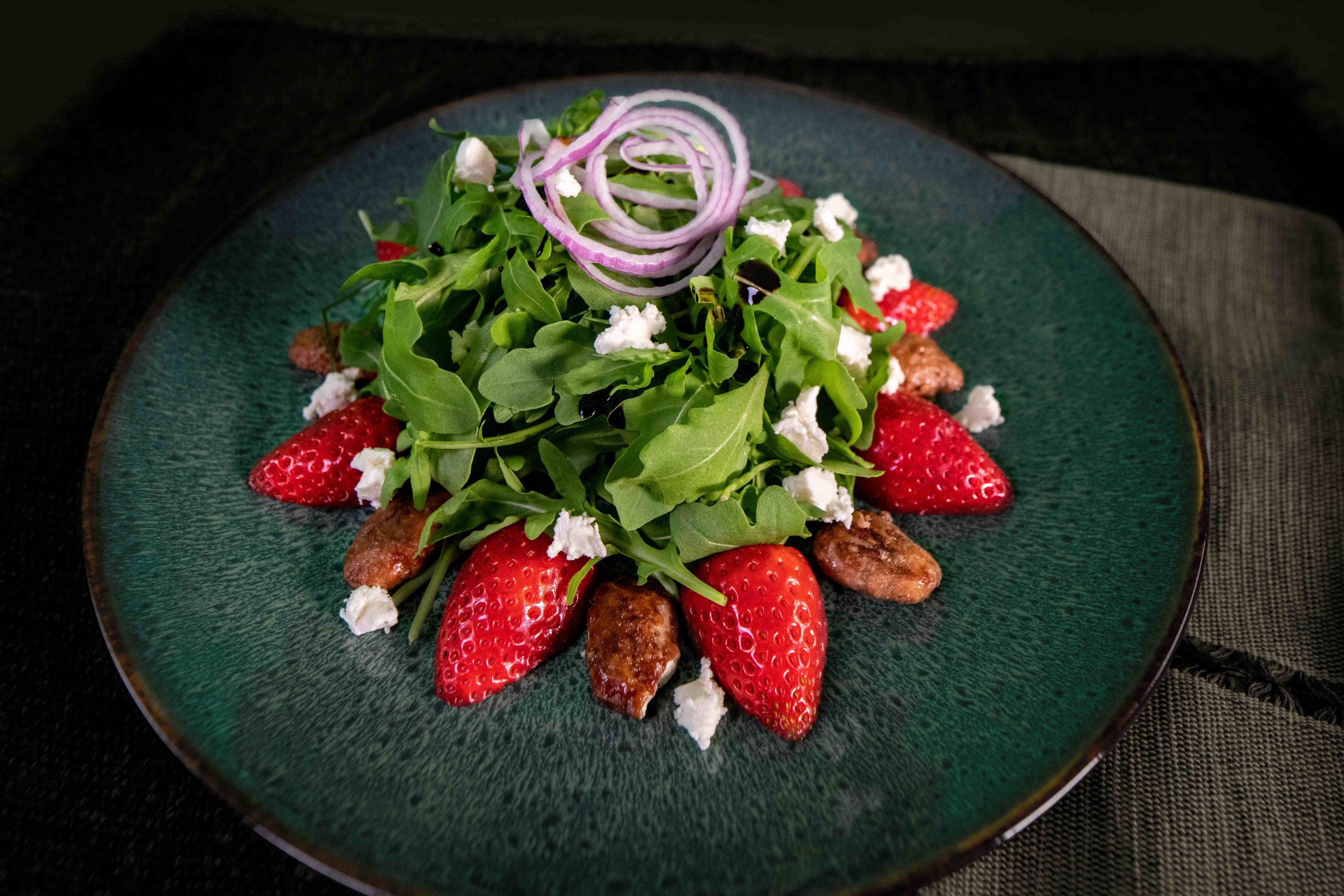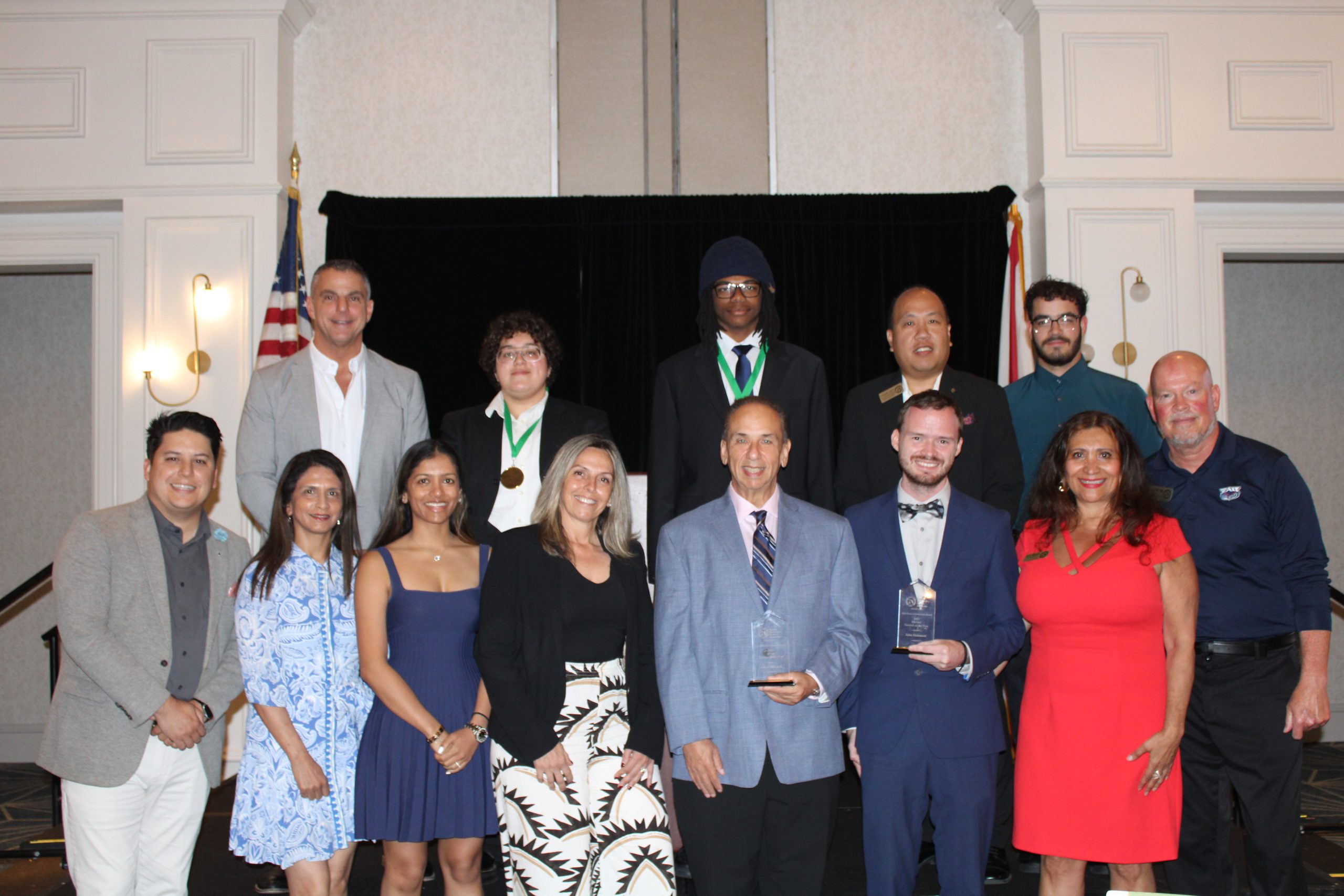From our partners at the National Restaurant Association
Millions of Americans experience food poisoning each year, suffering symptoms like vomiting, diarrhea, and cramps. In some cases, those symptoms aren’t just disruptive – they’re life-threatening.
That’s why, to kick off National Food Safety Month 2024, we’re focusing on some of the most common culprits behind foodborne illnesses. While food can become contaminated by chemical, physical, or biological elements, we’ll be focused on biological hazards. Biological hazards in food known to make people sick are called foodborne pathogens. If you work with food, you should be aware of common pathogens and their telltale symptoms so that you can protect yourself and your community. Let’s dive in!
What is a Foodborne Illness?
According to the Food and Drug Administration (FDA), Foodborne illness occurs when people eat or drink food or beverages contaminated with pathogens, chemicals, or toxins. Regardless of how food is contaminated, foodborne illness is a significant public health challenge in the U.S. and worldwide. The FDA reports that 1 in 6 people get sick from contaminated food each year.
Your Guide to Common Foodborne Illnesses
While there are many ways for food to become contaminated, the reality is that most cases of illness in the U.S. are caused by a select handful of foodborne pathogens. In fact, data from the FDA reveals that five major pathogens commonly cause foodborne illnesses across the nation.

Let’s take a closer look at each pathogen to understand what it is, how it spreads and what restaurants and food industry workers can do to protect themselves and their customers.
1. NOROVIRUS
The leading cause of illness from contaminated food or beverages in the U.S. is norovirus infection, which develops after a person is exposed to any of the many noroviruses found nationwide. Since there are several types of noroviruses, there are many ways to get infected.
When ingested, norovirus causes a condition known as acute gastroenteritis, which causes inflammation in the stomach or intestines. Most people who get sick with norovirus illness get better on their own within about one to three days. However, carriers can still spread the virus a few days after recovery.
 Signs and Symptoms
Signs and Symptoms
Most people develop symptoms of norovirus infection 12 to 48 hours after being exposed to the pathogen.
- Common: Diarrhea, vomiting, abdominal cramps, nausea
- Other Symptoms: Mild fever, headache, muscle aches
 How it Spreads
How it Spreads
- Direct contact with someone who has norovirus
- Eating foods or drinking beverages contaminated with norovirus
- Touching contaminated surfaces or objects and then putting unwashed fingers into the mouth
Noroviruses are infamously contagious. Employees who come into work sick with norovirus can easily pass the virus on to their colleagues and customers.
 Prevention Tips for Food Workers
Prevention Tips for Food Workers
While it may be easy to spread norovirus, you can take steps to avoid getting yourself or others sick.
- Wash your hands thoroughly and often, particularly when preparing food.
- Clean and disinfect surfaces regularly.
- Stay home when you’re sick until 48 hours after symptoms stop.
2. SALMONELLA
Few pathogens are as notorious as Salmonella, which are bacteria that can make people sick via contaminated food, beverages or water. Since Salmonella lives in the intestines of people and animals, it can also come from interacting with infected animals, their feces, or their surroundings.
There are some foods that are more likely than others to be exposed to Salmonella, including the following:
- Fresh fruits and vegetables
- Poultry and eggs
- Meats
- Milk
- Dairy products
- Seafood
- Sauces and dry foods (yeast, spices, peanut butter, etc.)
Most types of Salmonella bacteria cause a condition known as salmonellosis, which typically lasts for about four to seven days. Others cause typhoidal illness or typhoid fever.
 Signs and Symptoms
Signs and Symptoms
Usually, symptoms of salmonellosis begin about six hours to six days after exposure to the bacterium. However, some people don’t show signs of infection for several weeks.
- Common: Diarrhea that may be bloody, fever, stomach cramps
- Other Symptoms: Nausea, vomiting, headache, lethargy
 How it Spreads
How it Spreads
- Eating foods or drinks contaminated with the bacterium
- Touching infected animals or feces and not thoroughly washing hands afterward
It’s important to recognize that foods contaminated with Salmonella often look and smell normal.
 Prevention Tips for Food Workers
Prevention Tips for Food Workers
It can be difficult to wash Salmonella off food. As a result, the best ways to prevent infection involve killing or avoiding the bacteria entirely.
- Thoroughly cook all food items to a safe minimum internal temperature.
- Wash your hands regularly and thoroughly, especially after handling food.
- Keep raw food items separate from cooked items.
- Always store and display food at a safe temperature.
3. E. COLI
E. coli bacteria exists all around us. While most strains are harmless, certain types of E. coli can make people very sick.
These kinds of E. coli produce the Shiga toxin, which can cause severe health issues like blood clotting problems or kidney failure. An infection that develops from one of these bacteria may lead to a serious condition called hemolytic uremic syndrome (HUS). Over time, HUS can lead to permanent health symptoms and even cause death.
 Signs and Symptoms
Signs and Symptoms
In most cases, an E. coli infection causes gastrointestinal symptoms that may last for about two to nine days after exposure. The bacteria can also cause infections in the bloodstream, gallbladder, and other organs.
- Common: Diarrhea that may be watery or bloody, severe abdominal cramps
- Other Symptoms: Nausea, vomiting, low fever
One specific type of E. coli (enterotoxigenic E. coli, or ETEC) causes an infection known as traveler’s diarrhea, which causes severe diarrhea that sometimes occurs within just a few hours.
 How it Spreads
How it Spreads
- Eating or drinking contaminated items (or touching food that has been handled by an infected person)
- Eating contaminated foods that have not been thoroughly cooked
- Coming into contact with the feces of an infected person
- Touching an object or surface after it’s been touched by an infected person who has not washed their hands well enough
E. coli bacteria have been found in everything from ground meats to romaine lettuce and even commercially manufactured frozen cookie dough.
 Prevention Tips for Food Workers
Prevention Tips for Food Workers
In addition to essential food safety habits like washing your hands regularly, taking steps to protect yourself and others from E. coli is fairly straightforward:
- Cook ground beef to a minimum internal temperature of 160 °F.
- Cook raw meats and eggs to a safe minimum internal temperature.
- Wash raw produce under clean, running water.
- Avoid drinking unpasteurized or “raw” milk and juices.
4. HEPATITIS A
There are a few types of hepatitis virus, but the one that’s most relevant to the food industry is the hepatitis A virus, also known as “HAV.” The term “hepatitis A” actually describes the disease of the liver that the virus causes.
Many people who get sick from HAV take weeks or even months to recover. Some people get so sick that they experience liver failure, and the condition can also be fatal, particularly for those with compromised immune systems.
 Signs and Symptoms
Signs and Symptoms
Adults who get sick with hepatitis A are more likely than children to develop symptoms. However, not everyone with the virus has symptoms, which means they may unknowingly pass it on to others.
- Common: Diarrhea, dark urine or clay-colored stools, low appetite, nausea or vomiting, aches, fatigue, jaundice (yellowing of the skin and whites of the eyes)
- Other Symptoms: Inflammation of the liver or liver damage
 How it Spreads
How it Spreads
- Coming into direct contact with an infected person (shaking hands, for example)
- Eating or drinking contaminated food or beverages
It only takes a little bit of the virus to make people sick, so it’s important to be thorough in your prevention habits.
 Prevention Tips for Food Workers
Prevention Tips for Food Workers
Getting vaccinated against hepatitis A is one of the best ways to protect yourself from getting sick. Other things you can do to stay safe include the following:
- Thoroughly wash your hands after using the bathroom, changing diapers, and before preparing or eating food.
- Stay home from work if you show symptoms like nausea, diarrhea, or jaundice.
5. SHIGELLA
Last but certainly not least is Shigella, a bacterium that can spread through contaminated feces. These bacteria cause shigellosis, a condition that usually is mild and goes away by itself.
However, some cases of shigellosis can become severe enough to cause death. One type of Shigella (S. dysenteriae type 1) produces the Shiga toxin, just like E. coli can. This bacteria causes some of the most serious versions of the disease.
 Signs and Symptoms
Signs and Symptoms
Most people who get shigellosis experience symptoms for a few days, though some cases may last for weeks.
- Common: Diarrhea that may be bloody, fever, stomach cramps
- Other Symptoms: Vomiting, feeling the need to pass stool even with empty bowels
 How it Spreads
How it Spreads
- Getting Shigella bacteria on your hands and then touching food or your mouth
- Eating or drinking food or beverages prepared by an infected handler
- Coming in contact with infected feces
- Drinking contaminated recreational water (i.e., lake or river water)
The germs might also make their way onto foods that are grown in fields contaminated with Shigella-containing feces.
 Prevention Tips for Food Workers
Prevention Tips for Food Workers
Reduce your chances of catching or spreading a Shigella infection by following these essential tips.
- Thoroughly wash your hands before handling food, after going to the bathroom, or after cleaning up after someone who went to the bathroom.
- Keep diapers in a secure and covered, lined garbage can.
- Avoid drinking potentially contaminated water.
- Stay home from work if you experience diarrhea or vomiting.
Learn More About Foodborne Illness
To take a deeper dive into common foodborne illnesses, how they can spread, and what you can do to prevent contamination in your operation, download our eBook, “The Science of Foodborne Illnesses and Outbreaks Pt. 1: The Most Common Foodborne Illnesses.”















